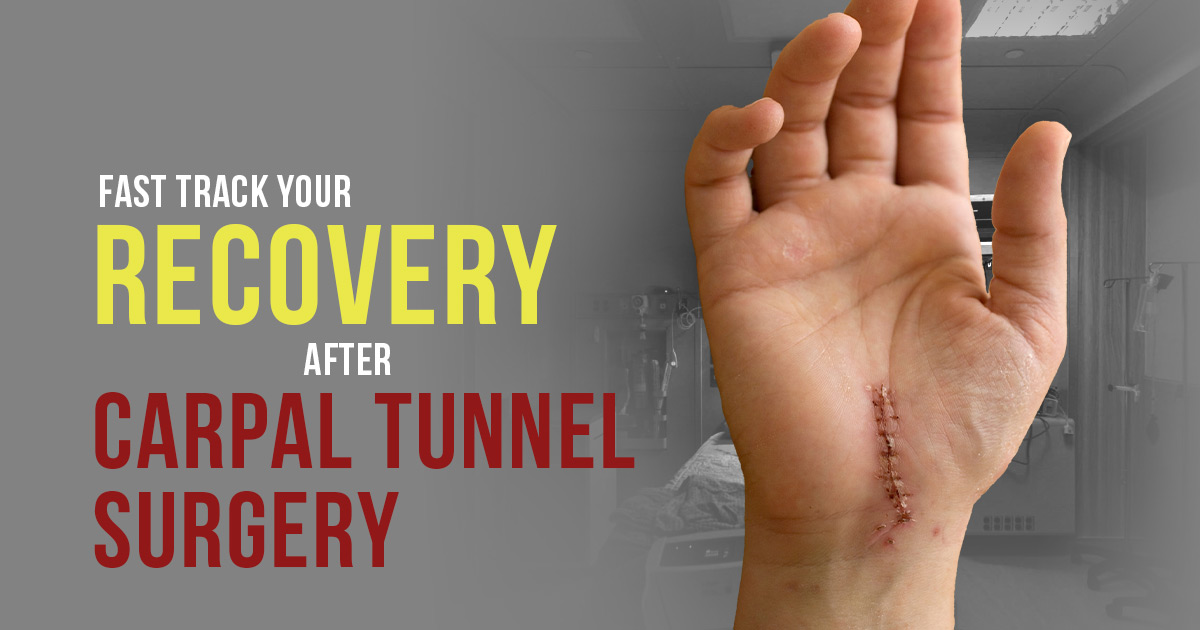Fast Track Your Recovery After Carpal Tunnel Surgery: Tips & Timeline

Dealing with carpal tunnel syndrome (CTS) can be a huge pain – literally! With up to 10 million people in the U.S. facing CTS symptoms like tingling fingers, numb hands, and dropping things unexpectedly, it’s no wonder many turn to surgery for relief. If you’re considering surgery or have already taken the plunge, you’re probably wondering how to speed up the recovery process and get back to enjoying life. Don’t worry, I’ve got you covered with some tips to make the whole thing less stressful.
The great news? Recovery from carpal tunnel surgery doesn’t have to drag on for months – especially if you had a minimally invasive surgery. With the right care and a little patience, you can get back on your feet (or hands, really!) in no time.
How Long Does Recovery Take?
Traditional vs. Minimally Invasive Surgery
First off, how fast you heal depends on the type of surgery you had. If you went with the traditional open surgery, healing might take weeks (or even a few months) since it involves a bigger incision and more tissue healing. But if you opted for something fancy like minimally invasive surgery, where only a tiny cut is made (and they sometimes use ultrasound to guide the process), it’s a whole different story.
With minimally invasive surgery, most people are back to light activities in about 3-6 days. You might even feel functional enough to return to work in just a couple of weeks, depending on your job. Full hand strength does take months to come back for most people no matter what, but most patients notice a big improvement fairly quickly.
Tips for a Faster Recovery
1. Wiggle Those Fingers!
It might sound weird, but moving your fingers a little can actually help you heal faster. Within 24-48 hours after surgery, start doing gentle finger exercises like bending them or lightly touching each fingertip to your thumb. This keeps your hand from getting stiff and boosts blood flow. But remember, gentle is the word here – no heavy lifting or intense gripping just yet!
2. Keep the Swelling Under Control
Swelling after surgery is totally normal, but making it go down faster can help you feel more comfortable. Keep your hand propped up above your heart, especially in the first few days. Use a pillow while you sleep or rest on the couch, or a sling if your doctor recommends it.
3. Keep Your Healing Area Safe
Your incision will need some TLC while it heals. Keep it clean and dry for the first 10-14 days after surgery. Use a waterproof cover when showering to avoid getting it wet. And for the love of all things hygienic, avoid peeling off the dressing too soon! Your doctor will tell you when it’s cool to go without it or when stitches should come out.
4. Massage That Scar
Once your wound is fully closed (typically after a couple of weeks), start massaging the scar. This might seem odd, but it’s actually super helpful. Use a bit of lotion or cream, and rub gently in circular motions. It’ll help the skin heal nicely and feel less tight.
5. Start Small With Activities
You don’t need to sit there staring at your hand all day. Light activities like brushing your hair or typing (if it doesn’t hurt) can be a great way to keep things moving. Just avoid anything that feels like too much pressure or strain, like opening jars or carrying grocery bags.
6. Eat Well and Stay Hydrated
What you eat matters just as much as what you do with your hands! Load up on fruits and veggies, especially those with vitamins C and E, to help your body heal. And don’t forget to drink plenty of water – staying hydrated makes a world of difference.
7. See a Physical Therapist If Needed
Sometimes, extra help is needed to rebuild strength or movement in your wrist. A physical therapist can show you specific exercises that work wonders. Even if your surgery was minimally invasive, a little extra guidance never hurts.
Why Minimally Invasive Surgery Rocks
Okay, if you’re lucky enough to be exploring minimally invasive surgery, do it. These modern techniques involve smaller cuts, less pain, and faster recovery times. Many people can skip the intense physical therapy that comes with traditional surgery and go back to regular activities way sooner.
Oh, and did I mention most of these surgeries are done on an outpatient basis? You’re literally in and out of the clinic the same day. It’s like a quick pit stop for your hand!
Keep an Eye Out for Warning Signs
Most recoveries are smooth sailing, but if you notice things like redness, discharge, new swelling, or pain that just won’t quit, don’t wait it out. Call your doctor. Catching issues early can save you from bigger problems down the road.
Oh, and pay attention if your hand feels overly numb or doesn’t improve at all after several weeks. While rare, sometimes additional treatment is needed.
Your Healing Journey Starts Here!
Look, if you’re nervous about recovering from carpal tunnel surgery, it is totally understandable. Surgery of any kind can sound intimidating. But here’s the thing – modern techniques, especially the minimally invasive ones, make the process so much easier and quicker than it used to be.
Take care of your hand (elevate, wiggle, and rest it), eat healthy, and don’t rush back into things too soon. Before long, you’ll be doing all the things you love without that pesky numbness or tingling holding you back. Whether it’s cooking, gaming, or just scrolling on your phone again without discomfort, you’ll wonder why you waited so long to fix the problem. Trust me, you’ve got this!
